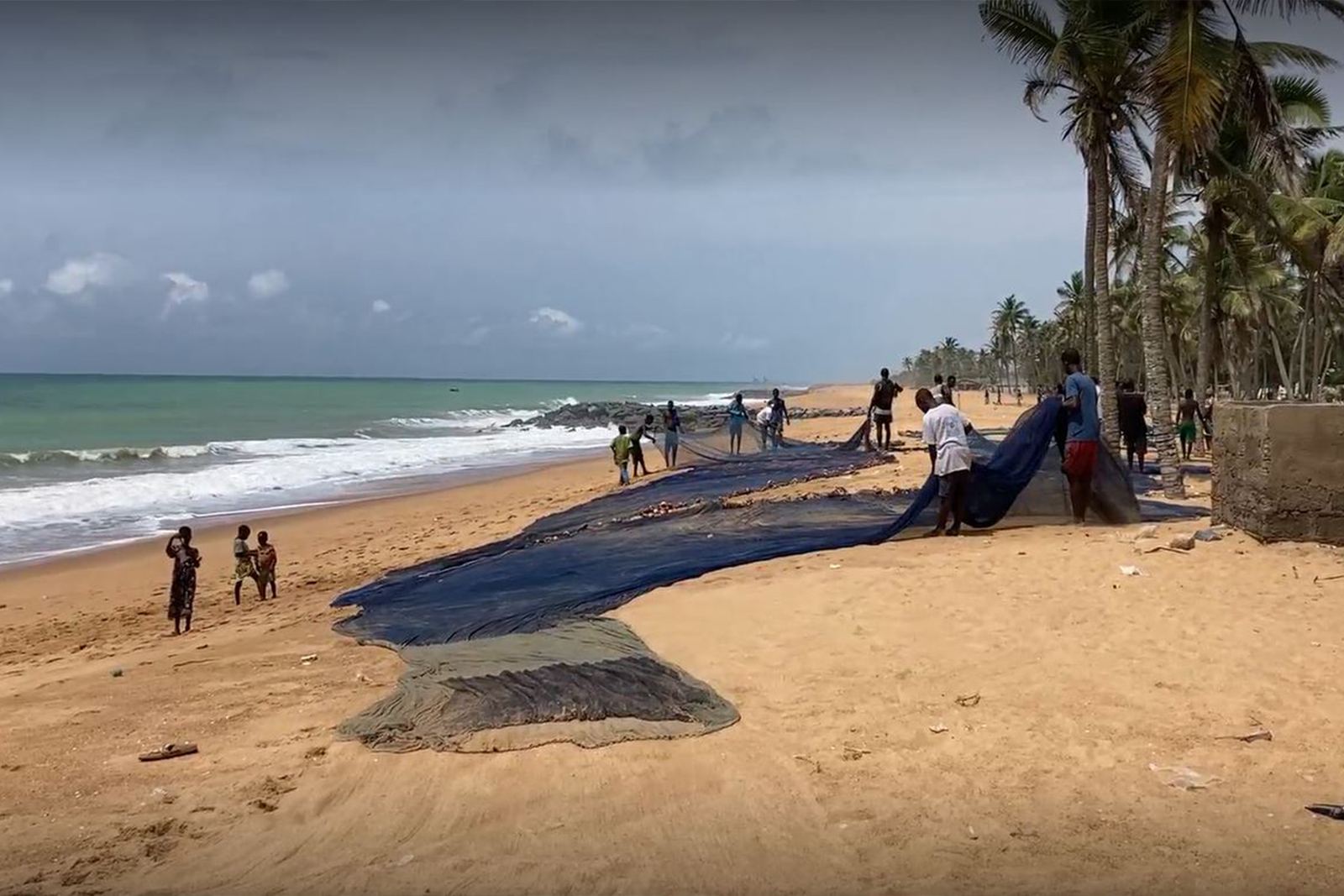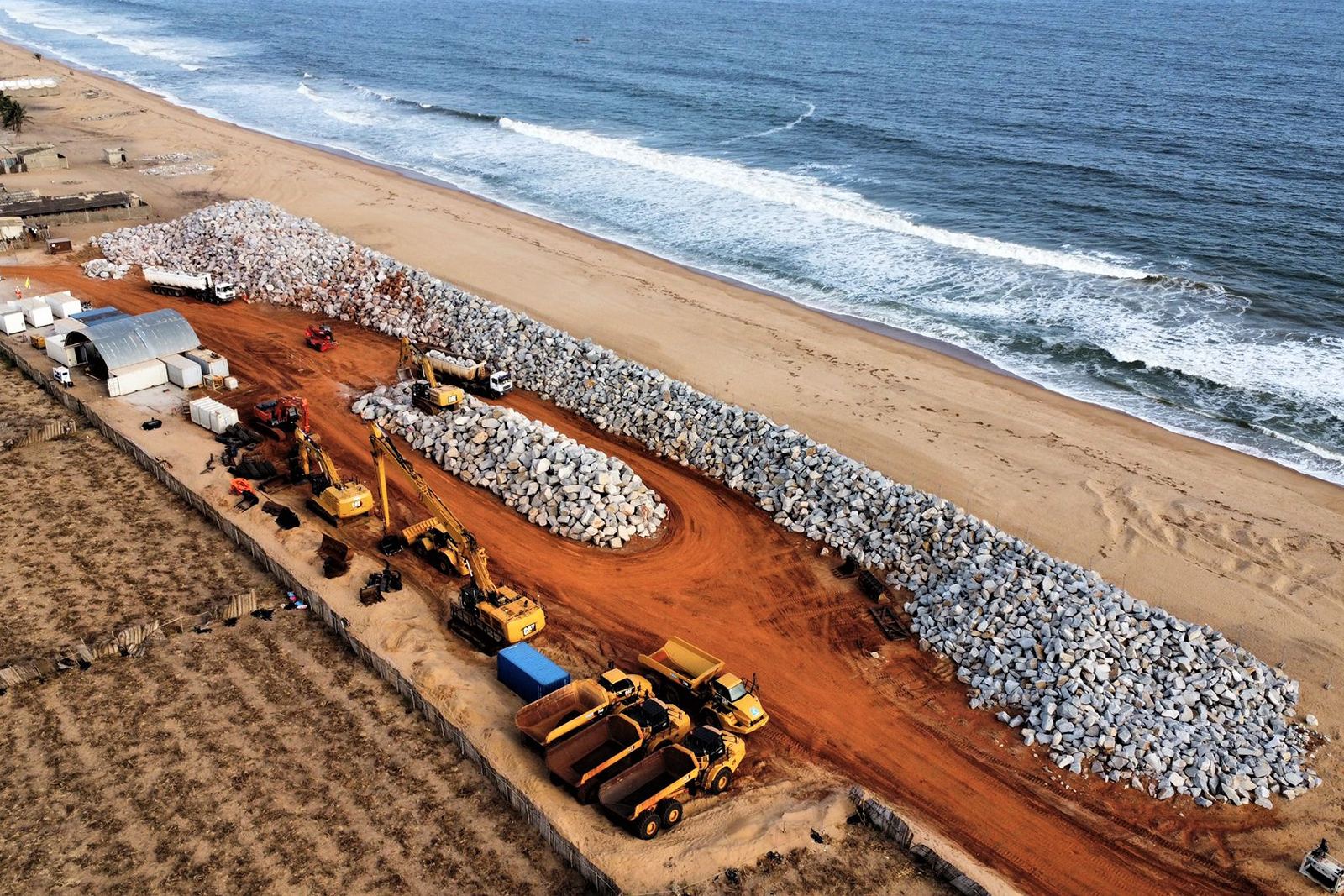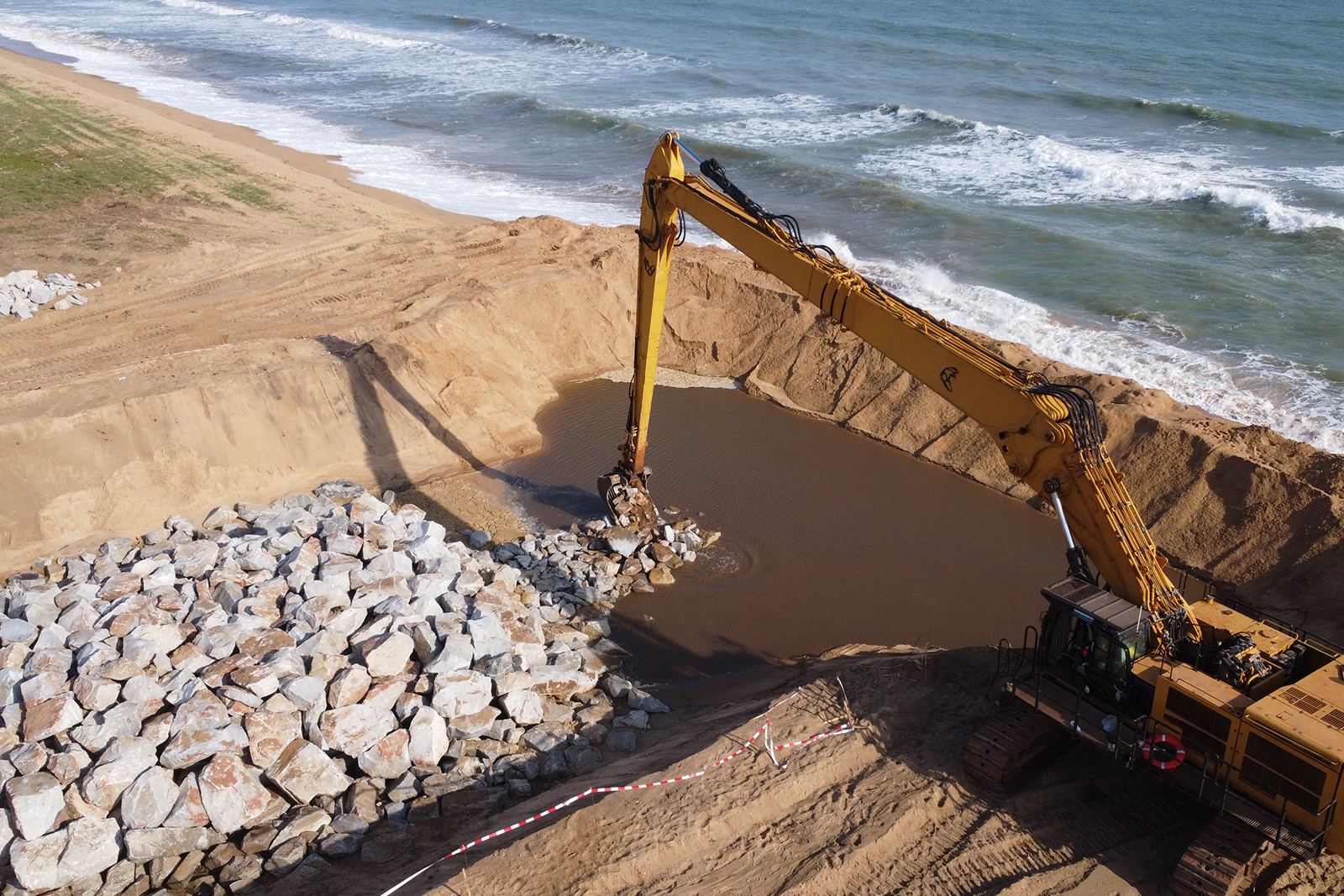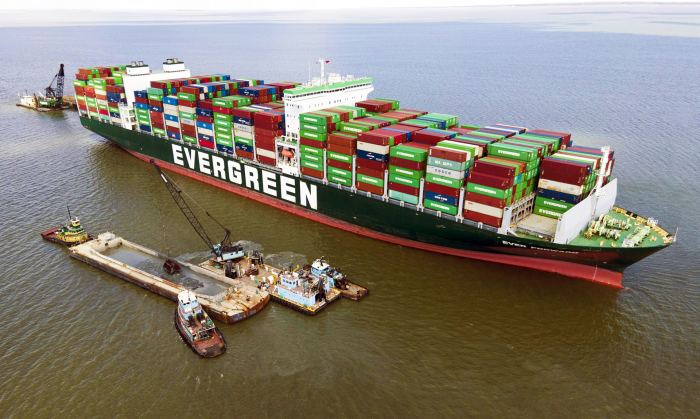The coastline of Togo and Benin moves between one and – in some places – up to ten meters every year. Land inwards, of course. Significant coastal erosion due to rising sea levels is the cause. And this poses a direct threat to economic activities and life on the African coast. After an intensive process, Boskalis is working on a sustainable solution that closely resembles the way the Dutch coast is protected.


Just imagine: you open the front door of your house and your entire living room is covered with a meter of sand. That is the harsh reality for many coastal residents in the West African countries of Togo and Benin. Calculations by the World Bank show that coastal erosion in Togo amounts to more than 2.5 meters a year. In neighboring Benin, the coastline is even receding by an annual rate of up to 4 meters. Locally, however, more serious cases of up to 10 meters a year have been observed.
Catastrophic
This development is catastrophic for the local population, who mainly live from fishing and arable farming on the coast and who therefore depend on a well-protected coastline. The construction of fifteen new, and the reinforcement of six existing breakwaters in the two countries should provide them with that protection. In addition, the beaches will be raised and a sand motor will be built. The sand engine is a concept co-developed by Boskalis that has been successfully used for ten years on the Dutch coast between Hoek van Holland and Scheveningen. The idea behind it is relatively simple. A huge amount of sand is deposited in a strategic location and the natural movement induced by the wind, waves and currents spreads it along the coast over time. That counteracts the coastal erosion resulting from the impact of the same elements. “It is a great natural solution to a major problem facing society in this region. A prime example of Building with Nature,” says project director Frans Thomassen.
And so Boskalis will be working through to late 2023 to protect about 40 kilometers of the West African coast. “We will take steps to shape the beach in such a way that fishermen and arable farmers will no longer be under threat in the coming decades and that their homes will be preserved and not filled with sand,” says Thomassen.
Social impact
The construction of the sand motor has already started. Thomassen: “During that construction, we want to return a section of beach of about 300 meters to the local people every week so that they can resume their daily activities as quickly as possible and enjoy the benefits of the coast again. That gives them a living and, in this way, we minimize the social impact of our work as much as possible.”
“That impact was measured prior to the project in an Environmental and Social Impact study,” says Boskalis’ desk manager Kevin Swinkels. “We looked at housing the local population elsewhere temporarily but also at possible compensation for the temporary loss of income during the work. Everything has been sorted out properly now.”




It is a great natural solution to a major problem facing society in this region
Thomassen can see for himself on location the positive impact that the project will have on the local people. “The surrounding area is enormously dependent on fishing and – to a lesser extent – on arable farming. They sail out to sea with long nets and haul them in, in the hope the nets will catch enough fish. To make sure they can carry on fishing like this, we must ensure that the houses where these people live aren’t swallowed up by the sea or that their houses aren’t invaded by the sand as they are now.”
